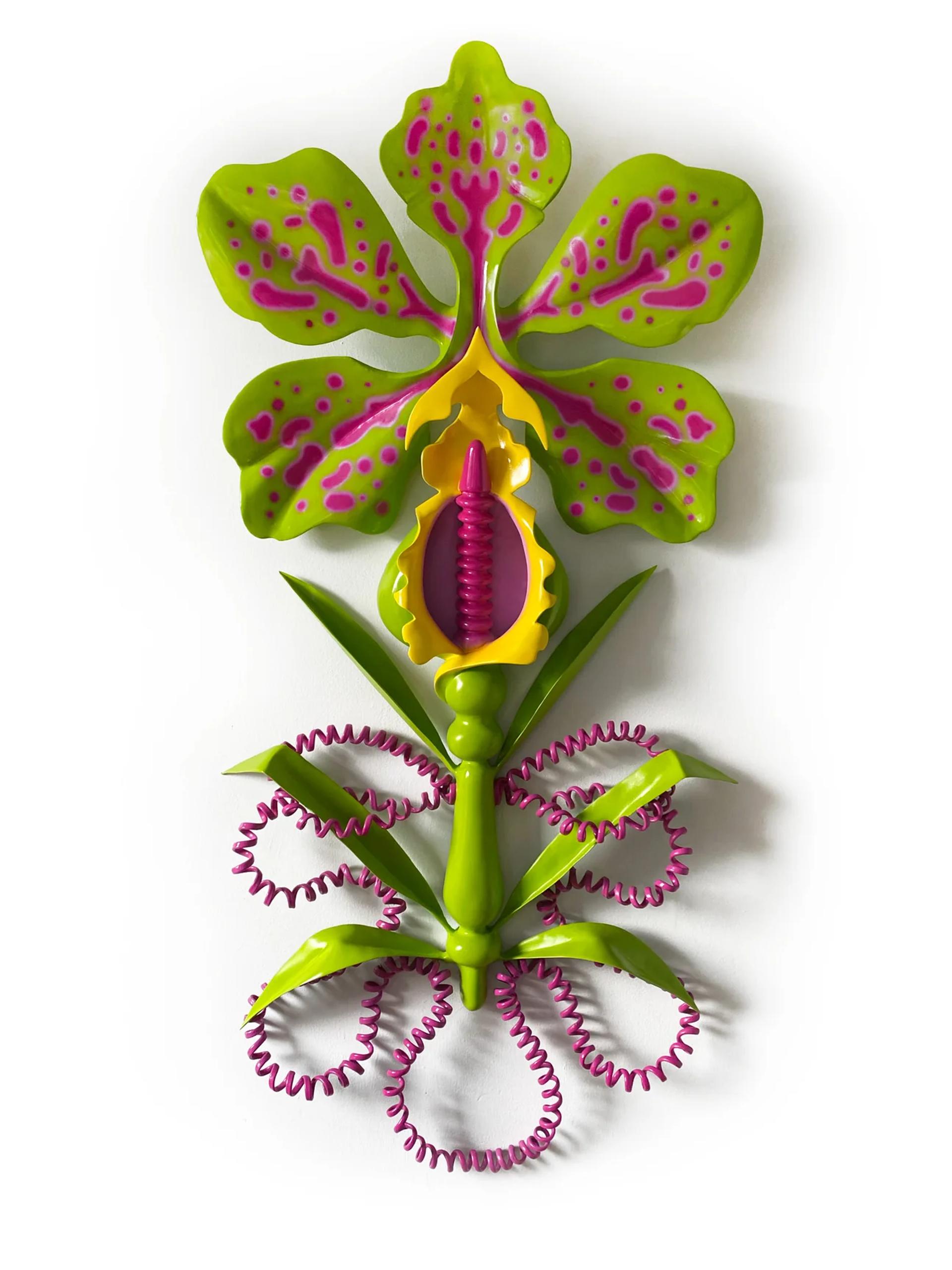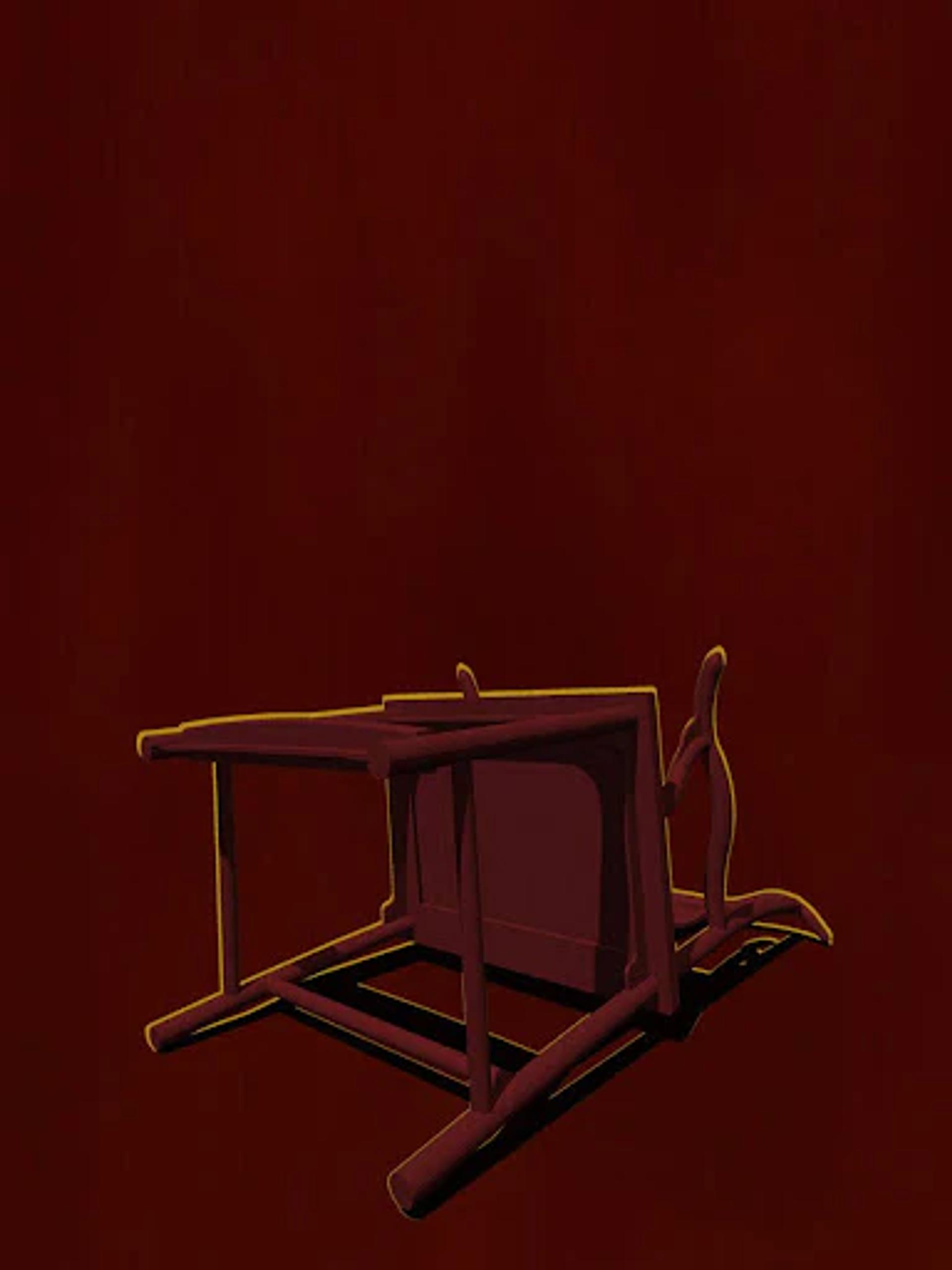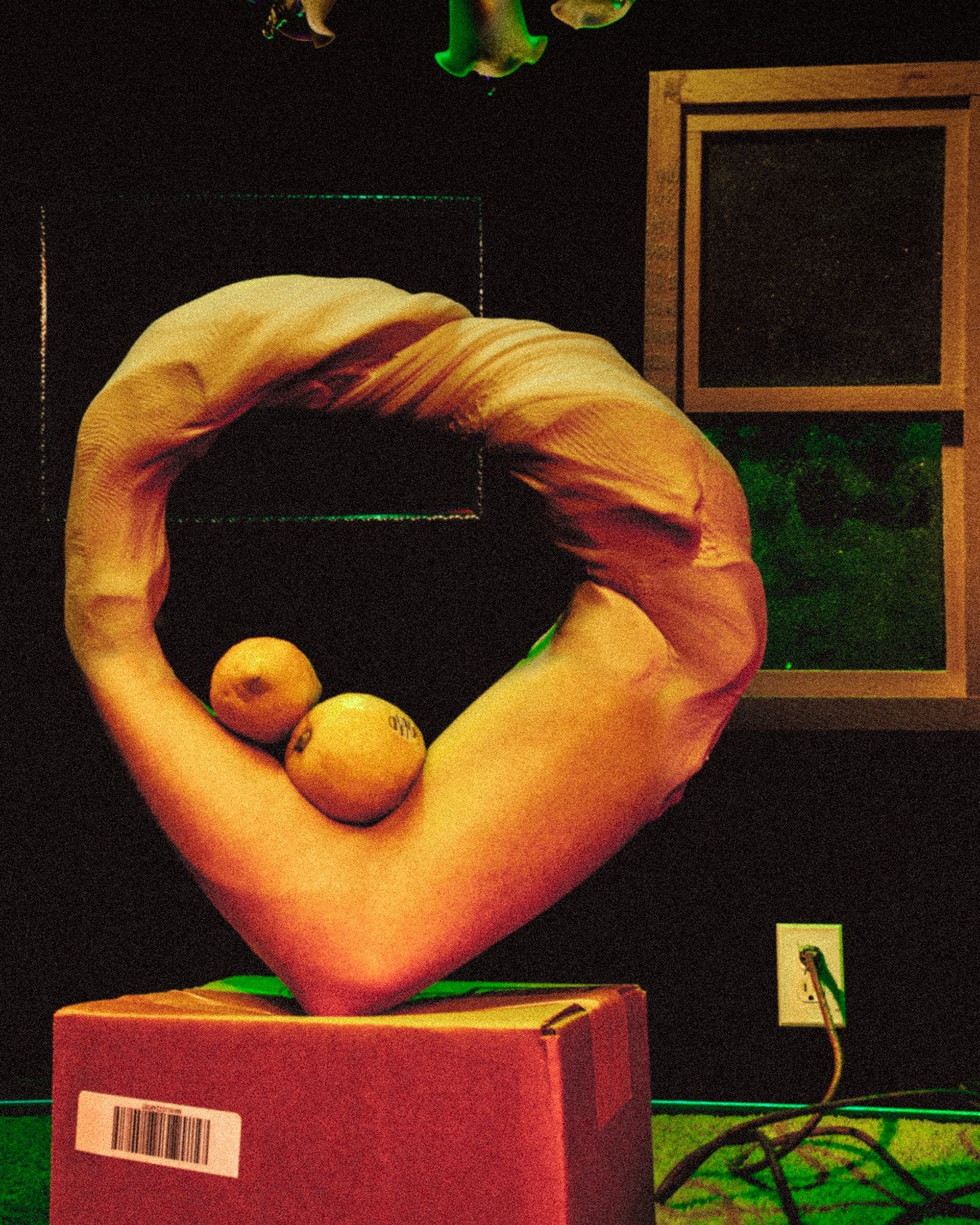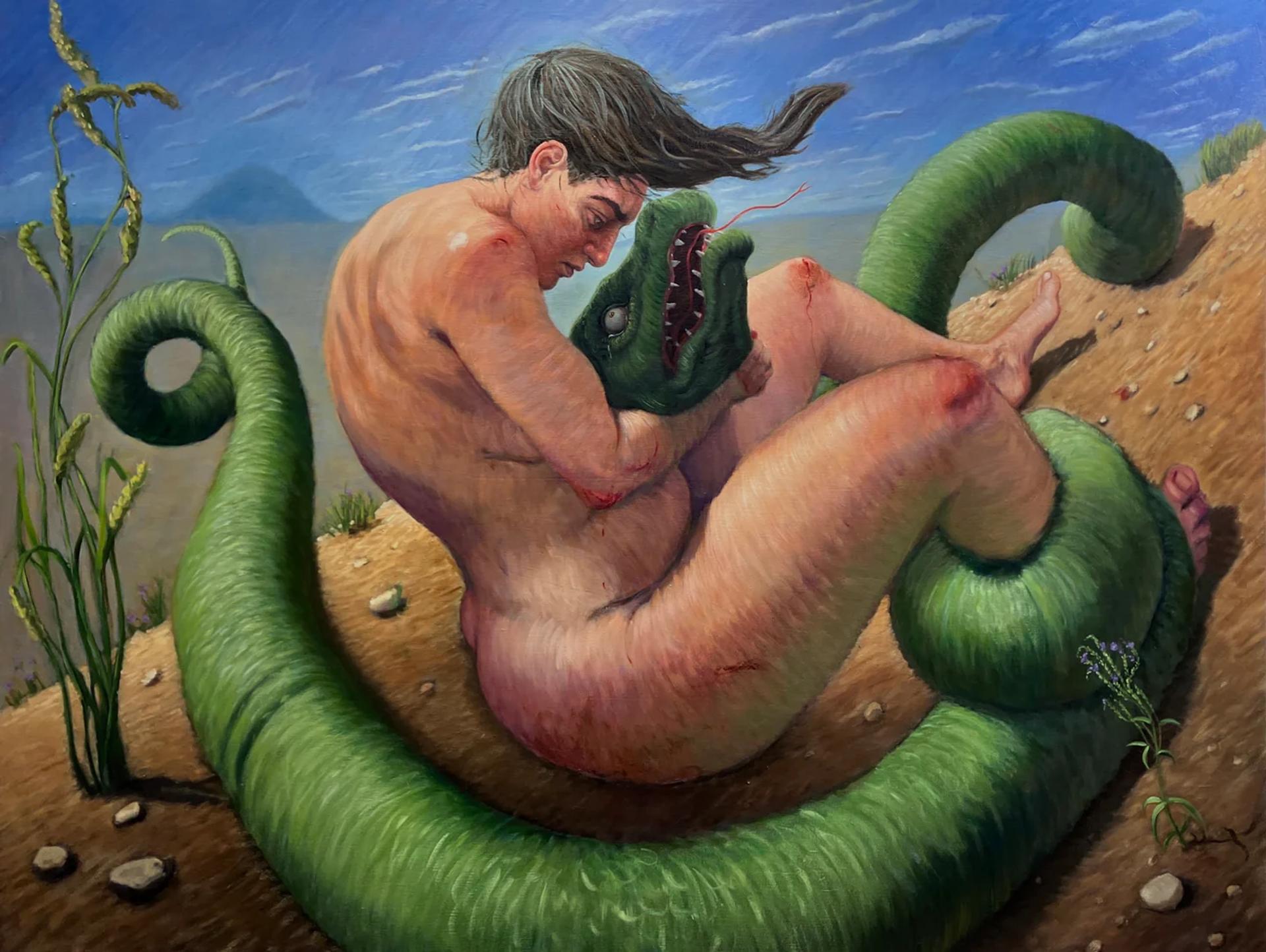The 13th New York iteration of the scrappy, curator-led Spring Break fair (until 9 September), has taken up residence on the tenth floor of a Hudson Square property at 75 Varick Street, just on the edge of Manhattan’s increasingly dominant Tribeca gallery district. The Spring Break aesthetic ethos, known for its blaring colour and do-it-yourself spirit, is back in true form this year, leading visitors through a labyrinthine loop of thick paint, bold sculpture and unique interventions into the event’s buttoned-up corporate environs.
The fair’s founders, Ambre Kelly and Andrew Gori, describe its 2024 theme, INT./EXT. (interior /exterior), as a “peanut butter and jelly sandwich of tactility and intangibleness”, an opportunity to use art as a bridge between forms, categories and visual planes. It is fitting, then, that much of the work on display at Spring Break has a Surrealist edge, imbuing creatures with human qualities while monster-ifying the figural status quo. Many of the stands and installations feature yearnings for new, old or other worlds beyond this one, spanning past, present and funky, far-flung futures.
Terra Keck, Out of Time
Terra Keck, Arcturus, 2024, $1,200 Courtesy the artist and Field Projects, via Spring Break Art Show
Tucked away in a darkened, teal cubicle lies Out of Time (stand 30), a solo display by artist Terra Keck, co-curated by Lisa Schilling, Jacob Rhodes and William Chan of Field Projects Gallery. The project features a suite of 20 small, back-lit “eraser drawings” by the Brooklyn-based artist, who uses the language of subtraction to create twinkling, tantric meditations on the existence of UFOs. “I trained as a print-maker, so I find a totally blank page incredibly unnerving,” Keck tells The Art Newspaper. Instead, she works backwards. “All of the marks you see are done by picking up pigment with an eraser,” Keck explains. She is not interested in aliens from a “military industrial complex or conspiratorial perspective”, but instead takes a hopeful position, considering the possibility of intergalactic visitors as a sign that humans are worth the visit. Her pieces meld visual references to 19th-century mysticism with allusions to crop circles, lending the drawings a folkloric timbre. Keck’s works range from $600-$5,000.
Sarah Angèle Wilson, Mother Nature’s Bitch

Sarah Angèle Wilson, WET, 2024, $6,000 Courtesy the artist, via Spring Break Art Show
The Canada-born, Brooklyn-based artist and illustrator Sarah Angèle Wilson makes a splash in the Office Hours section of the fair, specially curated by co-founders Kelly and Gori. Wilson’s glossy, chimeric relief sculptures burst off the wall with acidic insistence, combining the physicality of Baroque-era wrought iron with a juicy commercial patina. “I carve the sculptures out of XPS foam, and then work into them with clay and wood, so they look monumental, but they’re actually super light,” Wilson tells The Art Newspaper. The artist, who has made illustrations for the likes of The New York Times and Barron’s Magazine, translates her knack for composition into cool-girl coats of arms that reflect a fierce post-digital femininity. Wilson’s pieces on view at the fair range in price from $1500 to $6,000.
Benny Or, Silent Echoes

Benny Or, Yokeback 1: Silent Echoes, 2024, $8,000 Courtesy the artist, via Spring Break Art Show
Benny Or’s sombre, spare display (stand five) centers the Chinese Ming Dynasty yoke-back chair as a symbol of unearthed personal, cultural and spiritual histories. Curated by Anne-Laure Lemaitre, Silent Echoes may be Or’s debut as a painter, but it’s not his first turn as an art world denizen. A celebrated name in entertainment production design, Or boasts a CV that includes clients like Billie Eilish and Disney on Ice, and is no stranger to experiments in the Metaverse as a self-styled “art influencer”. The first-generation Canadian artist was moved to paint as a means to channel his great-grandmother, whom he discovered was a powerful shamanic healer in pre-Communist China. Using stark, contrasting hues, he invokes the toppled chair motif as a gesture towards narratives arrested by geopolitical upheaval. His pieces range in price from $1,800 to $8,000.
Robert Hickerson & Henry Crawley, PiLE

Robert Hickerson, Lemon Sculpture, 2020, $1300 Courtesy the artist, via Spring/Break Art Show
Photographic collaborators Robert Hickerson and Henry Crawley have joined forces for a queer horror fantasia in PiLE (stand 43), a project that explores late-stage capitalism from the vantage point of corrosive objecthood. Crawley photographs meticulously cultivated miniature tableaux that depict what he calls “a world you’ve forgotten in a corner”, and Hickerson’s images, dripping with 1980s kitsch and limned in harsh neon drop-shadows, articulate the psycho-sexual vicissitudes of the slasher film, a genre that exploits the anxious in-betweenness of social malady. Both spooky and contemplative, PiLE doesn’t sacrifice interiority in its search for prurient fun. Hawley’s and Hickerson’s works range in price from $850 to $1300.
Sarah Kayafas, They Can’t Hide The Sun

Sophia Kayafas, I Hate You, I Love You, 2024, $10,000 Courtesy the artist, via Spring Break Art Show
Monsters abound in the Greek American artist and musician Sophia Kayafas‘s solo presentation, curated by Christina Lucia Giuffrida (stand 40). Kayafas’s muscular, reality-bending paintings don the twin mantles of historical melodrama and mythological storytelling, casting the artist as the protagonist in the struggle against tradition. “She’s from a very conservative background,” Giuffrida tells The Art Newspaper, “and these paintings are all about the ways in which she saw herself out of that space.” Whether barely escaping from the gaping maw of a titanic fish or defeating a giant dragon-snake creature, Kayafas’s painterly stand-in prevails with tactile vulnerability to spare, a testament to the artist’s virtuosic hand (she teaches drawing at the Pratt Institute). Her work ranges in price from $750 to $10,000.
Spring Break Art Show, until 9 September, at 75 Varick Street, Manhattan




















